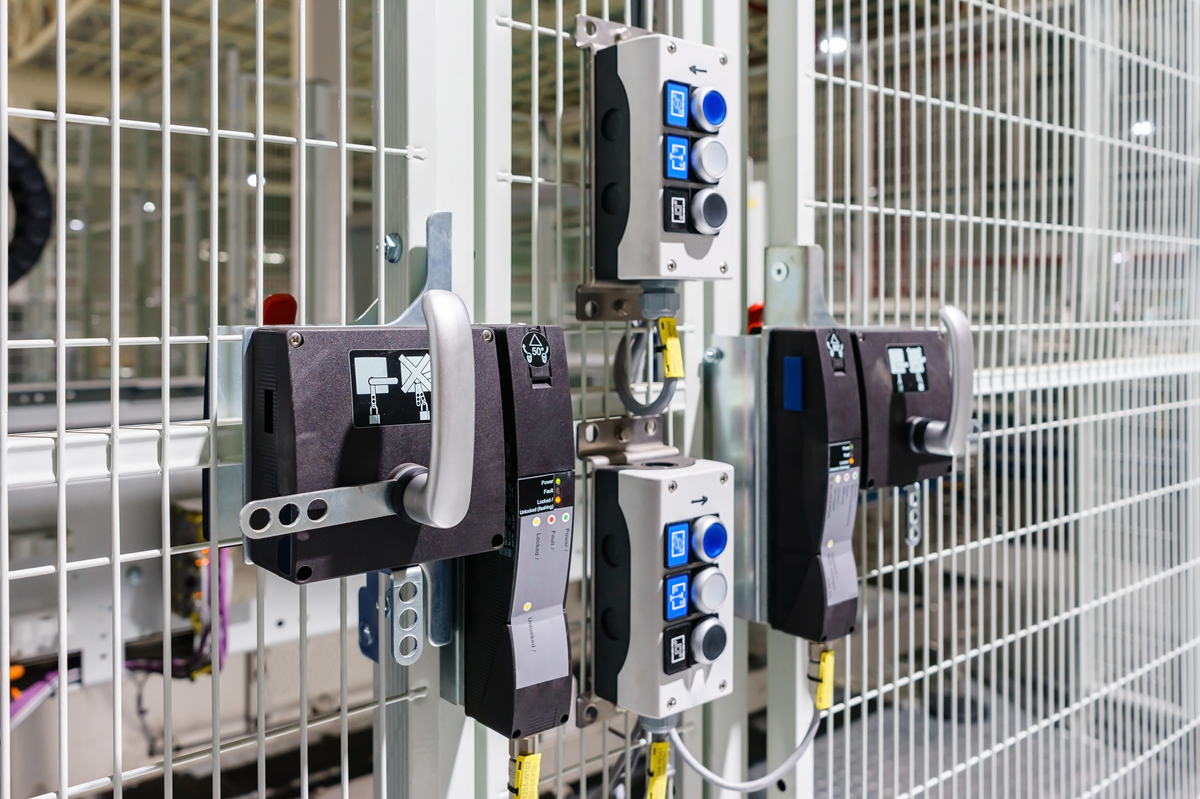Interlocks are a fundamental component of many machine guarding installations. Used to allow access to hazardous machinery, they are deployed in wide range of scenarios. ISO 14119 is the international standard that governs how these devices should be designed, selected, and integrated into machine safety systems.
The new ISO 14119:2025 edition brings important updates to the guidelines around interlocks and the role they play in machine guarding. Safety engineers and anyone responsible for safety in their manufacturing facility needs to understand these changes and their implications. British Standards are expected to harmonise with the new version later in 2025. This blog provides an overview of what has changed in the standard and how you can prepare for the forthcoming change in regulations.
What is ISO 14119?
ISO 14119 is the key international standard for interlocking guard devices. It applies to all machinery where interlocks are used to control access to hazardous areas. The standard:
- Defines types of interlocks (mechanical and electrical).
- Provides principles for device selection based on risk assessment.
- Covers installation and integration into the machine’s control system.
Specifies how to minimise the likelihood of operators bypassing or defeating safety devices.
Interlocks can be as simple as mechanical limit switches or as advanced as electronically coded systems with networked diagnostics. With increasing machinery complexity and digitisation, understanding the latest requirements and how they’ve changed is more important than ever.
What’s new in ISO 14119:2025?
The previous edition of ISO 14119 dates back to 2013. In the 12 years since, technology has advanced and interlocks have become more sophisticated. The 2025 edition reflects this, with several key updates:
Addressing “motivation to defeat”
Designers must now explicitly assess and mitigate reasons why operators might bypass interlocks (whether by habit or necessity, or with malintent). The goal is to eliminate or reduce the perceived need to defeat safety devices through better design and operational practices and to ensure deliberate malicious damage is thwarted.
New guidance on coded actuators and secure mounting
High-level coded actuators should be used where defeat motivation is likely, (e.g. RFID or mechanical coding). Actuators should be non-detachable, ideally welded or tamper-resistant.
- Annex I: Test procedures
- A new annex sets out standardised methods for validating the performance of interlocks.
- Annex J: Fault masking in complex systems
- Guidance from ISO/TR 24119 on evaluating diagnostic coverage in multilayered or daisy-chained systems has been incorporated.
- Annex K: Trapped key interlocking
- ISO/TS 19837 for trapped key systems has been superseded and this type of interlocking is now formally included in the standard.
- Terminology and selection criteria
- Several tables and definitions have been updated to reflect new technology and current industry practice.
Why does this matter for UK manufacturers?
BSI is expected to adopt ISO 14119:2025 as BS EN ISO 14119:2025 later this year. This will become the harmonised standard under the Supply of Machinery (Safety) Regulations.
Once that happens, compliance with the new version will be the clearest route to demonstrating conformity. Failing to update could leave manufacturers open to both the increased safety risks and regulatory enforcement.
In particular:
- Interlock systems installed to older standards may need redesign or upgrade.
- Control systems and fault diagnostics in complex or networked systems must align with the latest requirements.
- Motivations to bypass interlocks must be actively assessed and addressed.
What should safety managers and engineers do now?
With 14119’s revisions are now in force BSI regulations due before long, now is the time to start planning the updates to your safety systems in order to ensure compliance.
Start with a comprehensive interlock audit: catalogue every device, from basic mechanical guards to advanced coded actuators and verify that all interlocks are secure and resistant to tampering. This assessment will establish the foundation for subsequent actions.
Next, address the human element. Employ behavioural‑analysis techniques to understand where operators may be inclined to bypass safeguards. In areas exhibiting likelihood of increased defeat motivation, implement additional technical barriers or reinforce procedural controls to mitigate risk.
Proceed to scrutinise your system architecture. Complex or daisy‑chained configurations can obscure faults; therefore, map all layers of interconnection and enhance diagnostic capabilities to fulfill Annex J requirements, ensuring that hidden failures cannot compromise safety integrity.
Testing and maintenance procedures must also be realigned. Synchronise your verification schedules and methods with the benchmarks set out in Annex I. Confirm that your maintenance personnel possess the requisite skills and equipment to achieve consistent and reliable outcomes.
Plan and prioritise targeted retrofits for machinery that presents heightened risk or fails to meet current standards, addressing specific deficiencies with tailored upgrades.
Lastly, revise your training programmes. Update formal courses and toolbox talks so that all engineers and managers fully comprehend the updated requirements and their responsibilities in upholding a robust safety framework.
Summary of required actions
- Conduct a full interlock inventory and verify security of fixings
- Apply behavioural analysis to evaluate operator defeat motivation
- Review system architecture and upgrade diagnostics to Annex J standards
- Align testing and maintenance protocols with Annex I benchmarks
- Prioritise and plan retrofits for high‑risk or non‑compliant equipment
- Update training materials to reflect the revised ISO 14119 requirements
By acting now, UK manufacturers can stay ahead of regulatory changes and ensure their machinery remains compliant and safe. The move to ISO 14119:2025 is not just an exercise in paperwork—it reflects real-world advances in safety technology and best practice.

